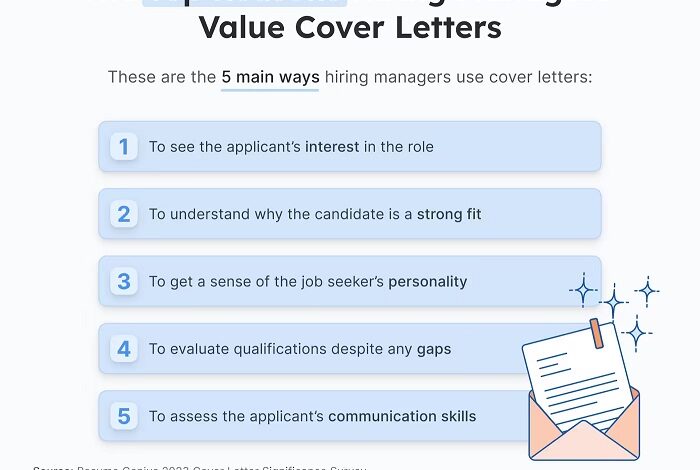How a cover letter can give you a competitive advantage

In today’s highly competitive job market, making a lasting impression is essential. A well-crafted cover letter can set you apart from 98% of other candidates, giving you a significant edge.
Why Cover Letters Matter
The Role of Cover Letters in Modern Hiring
Many job seekers underestimate the impact of a cover letter, assuming recruiters only focus on resumes. However, hiring managers often use cover letters as a deciding factor between candidates with similar qualifications. A well-written letter can highlight your passion for the role, provide context to your experience, and demonstrate your ability to communicate effectively.
Additionally, a cover letter allows you to directly address the hiring manager, making your application feel more personal and engaging. Taking the time to craft one shows a proactive approach—something that employers appreciate in potential hires.
- Stand Out from the Crowd: Only 2% of applicants submit strong cover letters, making it a powerful differentiator.
- Increase Visibility: 83% of hiring managers read cover letters, ensuring your application gets noticed.
- Showcase Personality: A resume provides facts, but a cover letter reveals your personality and motivation.
- Gain a Competitive Edge: A compelling cover letter can boost your application’s visibility by 38%.
- Demonstrate Effort: 72% of recruiters expect a cover letter, even when it’s optional.
- Address Career Gaps: Use a cover letter to explain employment gaps or career changes.
Want to stand out effortlessly? Read more https://www.robinwaite.com/blog/how-a-cover-letter-can-help-you-beat-out-98-of-other-candidates. This article can help you craft a personalised cover letter that aligns with job requirements.
Common Cover Letter Mistakes to Avoid
While a strong cover letter can boost your chances of landing an interview, certain mistakes can hurt your application. Here are some common pitfalls:
- Using a Generic Template: Recruiters can instantly spot a copy-paste cover letter. Always customize it for each job.
- Focusing Too Much on Yourself: While you want to highlight your skills, make sure to tie them back to how they benefit the company.
- Repeating Your Resume: A cover letter should complement, not duplicate, your resume. Use it to provide additional insights.
- Failing to Proofread: Typos and grammatical errors can make a bad first impression. Always proofread before submitting.
- Not Addressing the Hiring Manager: Whenever possible, address your cover letter to a specific person instead of using “To Whom It May Concern.”
Avoiding these mistakes can help ensure your cover letter strengthens—not weakens—your job application.
How to Join the Top 2% of Candidates
- Personalise Every Application: Tailor each cover letter to the specific job and company.
- Match Key Skills: Highlight how your experience meets job requirements.
- Express Enthusiasm: Show genuine excitement about the role.
With 48% of hiring managers spending just 30 seconds to two minutes reviewing cover letters, make every word count. Instead of mass-applying without a cover letter, invest time in crafting one strong application and see the difference. Join the 2% of candidates who secure better opportunities with well-written cover letters.
Common Cover Letter Mistakes to Avoid
Even a strong cover letter can lose its impact if it contains common mistakes. Avoid these pitfalls to ensure your application stands out for the right reasons:
- Being Too Generic: Recruiters can easily spot templated letters. Tailor each one to the job and company.
- Repeating Your Resume: A cover letter should complement, not duplicate, your resume. Use it to provide context and highlight your motivations.
- Focusing on Yourself Instead of the Employer: Shift the focus from what you want to what you can offer the company.
- Ignoring Formatting and Length: Keep your cover letter concise (250-400 words) and well-structured for readability.
- Skipping Proofreading: Typos and grammatical errors can make a negative impression. Always review before submitting.
By avoiding these mistakes and refining your cover letter, you increase your chances of making a strong impact and securing an interview.
The Ideal Cover Letter Structure
To ensure your cover letter makes an impact, structure it effectively:
- Introduction: Capture attention with a compelling opening that explains why you’re interested in the role.
- Body Paragraphs: Highlight your most relevant skills and experience, linking them to the company’s needs.
- Closing Statement: Express enthusiasm for the position, include a call to action (e.g., requesting an interview), and thank the hiring manager for their time.
A well-structured, concise, and engaging cover letter will significantly increase your chances of moving forward in the hiring process.



